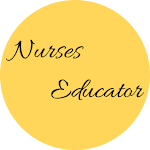Nursing Education and Social Media, Learning Management, Clinical Experience, Using Mobile Devices During Clinical, Putting it all Together for Connected Classroom
Social Media Use as an Electronic Source In Nursing Education
Social media are forms of electronic communication used to create online communities and share information. Social networking and media are incredibly popular; millions visit sites such as Facebook, Twitter, Instagram, LinkedIn, Pinterest, and YouTube every day. Searching social media for health-related postings as an assignment allows students to explore the concerns and knowledge of the lay population.
This can be a springboard for discussions on health care issues, health policy, patient teaching, and alternative treatments. Social networks can also be used as a method for finding participants for nursing research studies (Amerson, 2011).
Social media sites are also useful for communication among students and faculty, as well as for with the general public about nursing, school, or health care issues. Facebook provides the ability to create closed groups.
A closed group can be used among students as a support group. Twitter accounts can be created to generate tweets, or short news items, about events on campus or health related topics. Instagram can be used to post photographs of campus events or student activities.
Faculty can use blogs by using LMS discussion tools or free blogging software. Social media such as Ning have also been used to promote discussion in a community health course (Drake & Leander, 2013). Social media sites have great potential risk for privacy violations if used improperly, and there are increasing reports of violations (National Council of State Boards of Nursing, 2011).
Schmitt, Sims Giddens, and
Booth (2014) suggests that social media tools can be part of the new pedagogy
if used with precautions against invasions of privacy. The risks of social
media can be incorporated into discussions of privacy and professionalism
(Peck, 2014).
Learning Management Systems In Nursing Education
Many institutions offer an LMS to integrate technology into a class, provide supplemental materials, manage grades, communicate with students, give quizzes, and submit assignments (Watson, 2007). The LMS can be configured to assist faculty who teach in a hybrid online/classroom course or an all-online course. An LMS can also track students' progress toward mastery of established learning objectives.
Online collaboration helps students connect with each other and the teacher through LMS chat rooms. An important aspect of the LMS is that the teacher controls access and the information on the course site is restricted to authorized users.
This protects the integrity of the course materials and the privacy of
the students, and avoids copyright limitations for materials that could not be
put on the general Internet. For example, videos or documents can be posted
with access limited to enrolled students.
Connected Clinical Experience In Nursing Education
The connected classroom assumes greater importance as faculty design curricula that better link classroom experiences for application in clinical practice. One of the greatest advantages of using mobile devices in the clinical setting is the ability for students to bring their reference texts in a highly portable form.
During the course of
a clinical experience students may encounter drugs, terminology, diseases, or
laboratory values they have yet to learn. Looking up information as needed is
learning by doing and in a context that aids retention. Before planning to use
mobile devices in clinical settings, faculty must be sure to have policies
concerning their proper use.
Using Mobile Devices during Clinical Experiences In Nursing Education
The use of mobile devices during clinical experiences can aid learning and help students apply what they are learning in the classroom (Farrell & Rose 2008; Gregory & Lowder, 2013; Secco, Amirault, Doiron-Maillet, & Furlong, 2013; Wittman-Price , Kennedy & Godwin, 2012). Students should be oriented to the software before entering the clinical area so they know its capabilities.
Faculty should also discuss with students the appropriate use of these tools and how to wash hands frequently between patient care and use of these devices. Faculty who use any of these techniques must be well practiced themselves in the use of technology. Students also look at faculty modeling of technology in the clinical setting.
Faculty use improves acceptance by staff and reduces students' technological
fears (Secco, Amirault, Doiron-Maillet, & Furlong, 2014). Health care
resources and applications on electronic devices are useful as reference
material, for patient teaching, and patient assessment and monitoring.
Putting it all Together for Connected Classroom In Nursing Education
Teaching in a connected classroom offers the opportunity for using learning technology to best advantage, connecting students with resources, and flipping the classroom. The connected classroom also promotes linkages with clinical practice and promotes learning for application to real-world patient care situations.
The connected classroom also provides students an opportunity to investigate and use emerging health care technologies used for health assessment, patient teaching, and evidence-based practice. In the connected classroom, faculty intentionally choose the teaching methods that will enhance learning. For example, “high-tech” is not needed for small group discussions, debates, or in-class planning of care.
Yet everyone will help students connect with each other and the faculty. Traditional pedagogy that values memorization over learning for application to patient care will not adequately prepare nursing students for their future practice. Digital technology such as podcasts, ARSs, wikis, and streaming videos may not be directly used in clinical practice but will help students learn in a more active way than previous methods allowed.
These tools can be used at little or no cost, but do take preparation to use effectively. When faculty design learning objectives and outcomes that require higher order thinking and application to practice, they will be in a position to choose methods that take advantage of learning technology rather than having technology guide the objectives.
Using mobile technology in the clinical setting is simultaneously a teaching and practice tool. Solving real-world problems with mobile computing tools helps put students on the path to better practice after graduation. A clear policy on the appropriate use of these tools must be in place before students use the tools clinically.
Although clinical agencies may have concerns about privacy violations, faculty can offer reassurance through the use of school and agency privacy policies and the use of appropriate ethical behaviors. The decision to have a connected classroom is no longer a question of if but of when it will be implemented.
The exponential growth of health care information requires students to learn how to locate and use new information. The increasing globalization of health care practice also means a greater need for connections with other health care providers and patients.
New technologies will emerge after the publication of this book and faculty need to be ready and able to incorporate them into teaching and clinical practice. All of these factors will lead faculty to find their connections with students, patients, and the world.
As Albert Einstein (Frank,
2002, p. 185) noted, “[I do not] carry such information in my mind since it is
readily available in books . . . . “The value of a college education is not the
learning of many facts but the training of the mind to think.”




Give your opinion if have any.